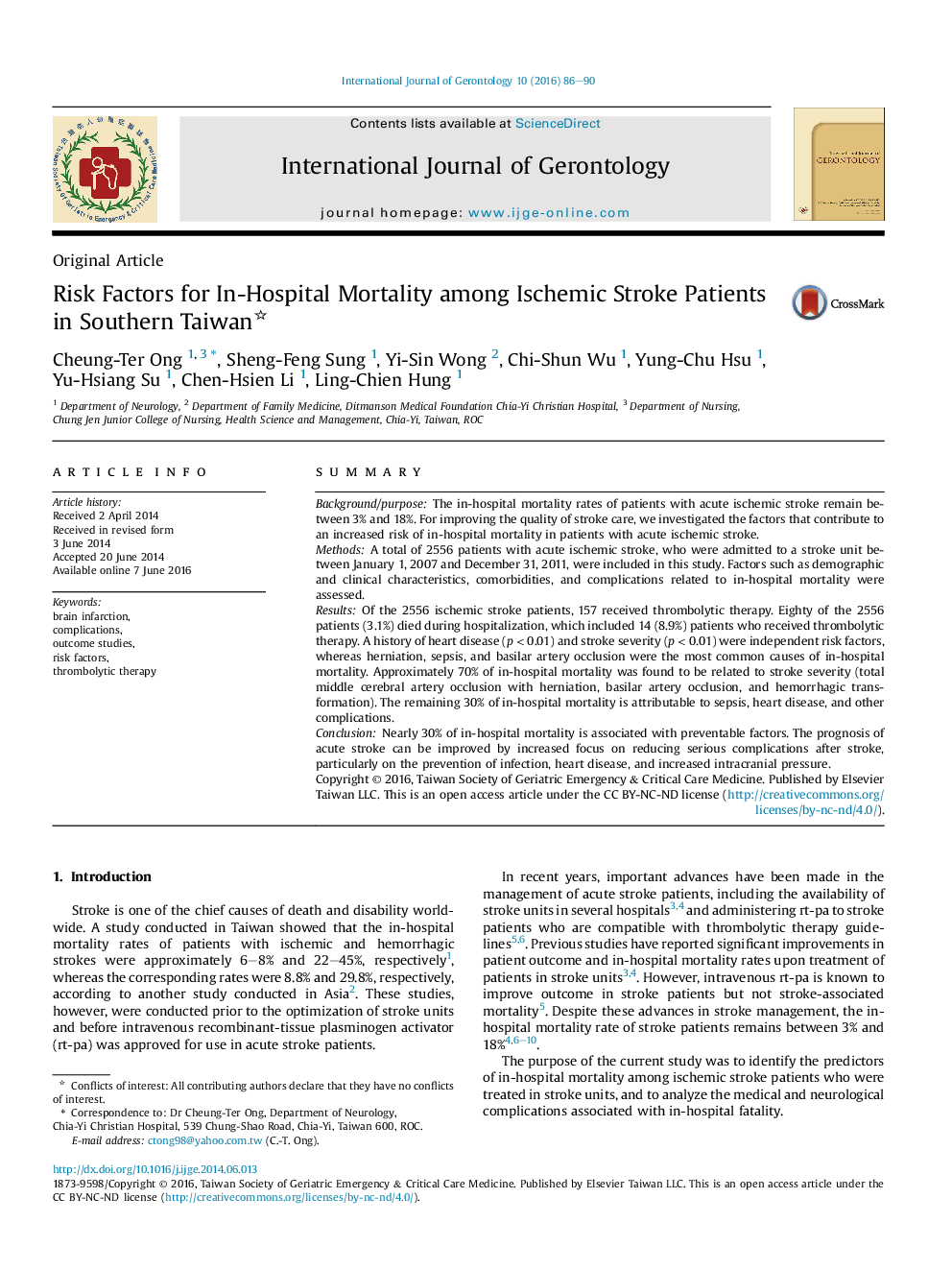| Article ID | Journal | Published Year | Pages | File Type |
|---|---|---|---|---|
| 3325039 | International Journal of Gerontology | 2016 | 5 Pages |
SummaryBackground/purposeThe in-hospital mortality rates of patients with acute ischemic stroke remain between 3% and 18%. For improving the quality of stroke care, we investigated the factors that contribute to an increased risk of in-hospital mortality in patients with acute ischemic stroke.MethodsA total of 2556 patients with acute ischemic stroke, who were admitted to a stroke unit between January 1, 2007 and December 31, 2011, were included in this study. Factors such as demographic and clinical characteristics, comorbidities, and complications related to in-hospital mortality were assessed.ResultsOf the 2556 ischemic stroke patients, 157 received thrombolytic therapy. Eighty of the 2556 patients (3.1%) died during hospitalization, which included 14 (8.9%) patients who received thrombolytic therapy. A history of heart disease (p < 0.01) and stroke severity (p < 0.01) were independent risk factors, whereas herniation, sepsis, and basilar artery occlusion were the most common causes of in-hospital mortality. Approximately 70% of in-hospital mortality was found to be related to stroke severity (total middle cerebral artery occlusion with herniation, basilar artery occlusion, and hemorrhagic transformation). The remaining 30% of in-hospital mortality is attributable to sepsis, heart disease, and other complications.ConclusionNearly 30% of in-hospital mortality is associated with preventable factors. The prognosis of acute stroke can be improved by increased focus on reducing serious complications after stroke, particularly on the prevention of infection, heart disease, and increased intracranial pressure.
